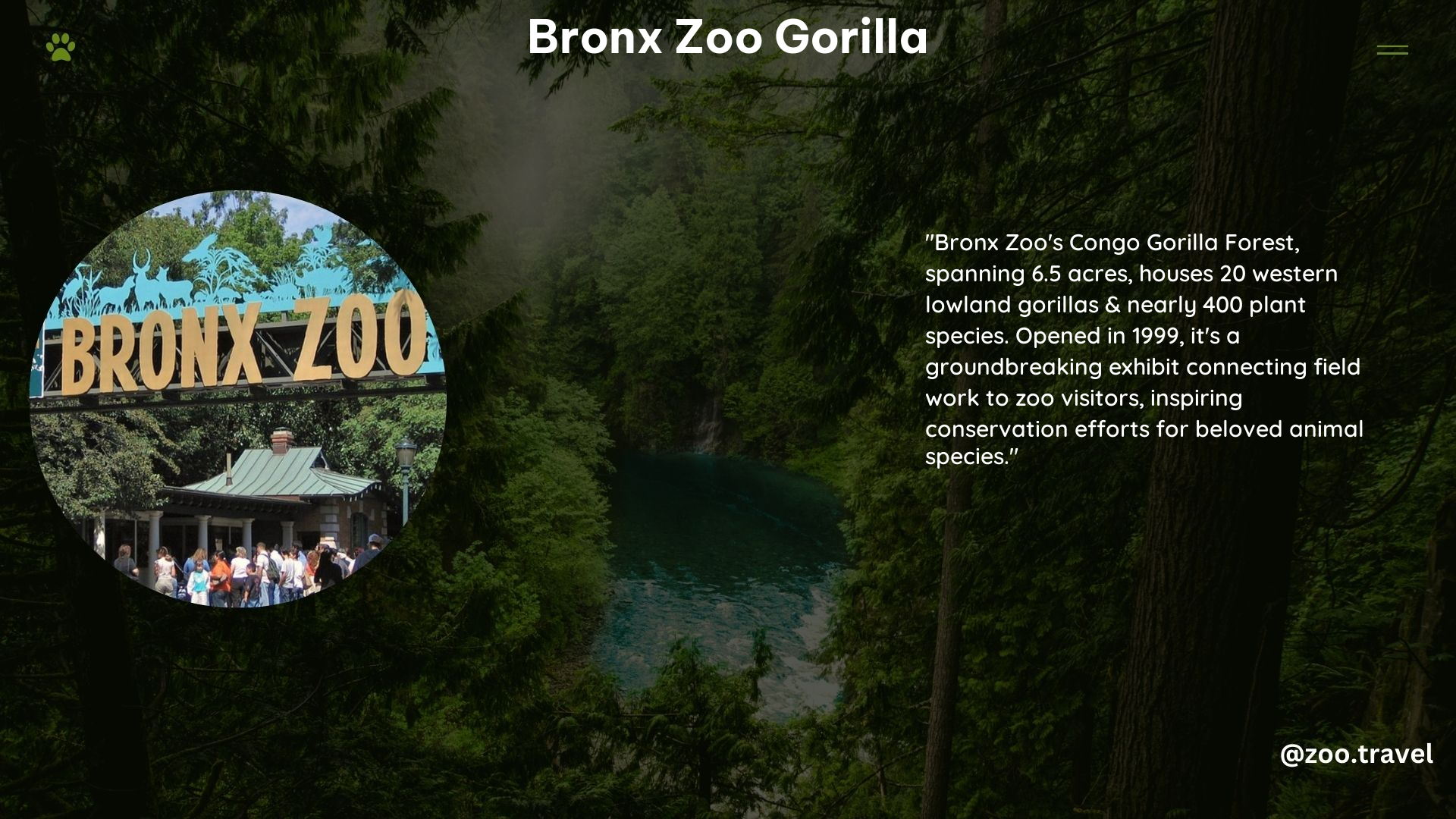The Bronx Zoo Gorilla exhibit, Congo Gorilla Forest, is a 6.5-acre immersive experience that transports visitors to the heart of the African rainforest. This expansive exhibit is home to a thriving community of 20 western lowland gorillas, offering a unique opportunity to observe these magnificent primates in a naturalistic setting.
The Bronx Zoo Gorilla: A Closer Look
The Bronx Zoo Gorilla, or the western lowland gorilla, is the star of the Congo Gorilla Forest exhibit. These gentle giants are known for their impressive size, with adult males weighing up to 400 pounds and standing up to 6 feet tall. Visitors can witness the gorillas’ impressive strength and agility as they move through the lush vegetation, foraging for a variety of fruits, leaves, and other plant matter.
One of the most captivating residents of the exhibit is Ernie, a 36-year-old western lowland gorilla. Ernie is a regular participant in the zoo’s daily ultrasound training, which allows keepers to monitor his heart health and contribute to the Great Ape Heart Project, a collaborative effort to understand and improve the cardiac health of great apes in captivity.
The Immersive Congo Gorilla Forest Experience

The Congo Gorilla Forest exhibit is designed to immerse visitors in the sights, sounds, and smells of the African rainforest. The 6.5-acre exhibit features nearly 400 species of plants, ranging from towering 50-foot trees to delicate orchids, creating a lush and verdant environment for the gorillas and other animal residents.
In addition to the western lowland gorillas, the exhibit is home to a diverse array of other species, including mandrills, okapis, red river hogs, and more. Visitors can explore the exhibit’s winding paths, cross over a suspension bridge, and even venture into an indoor viewing area to observe the gorillas during the colder months.
Breeding and Conservation Efforts
The Bronx Zoo Gorilla exhibit is not just a place for visitors to observe these magnificent creatures; it is also a hub for important conservation and breeding efforts. As part of the Association of Zoos and Aquariums’ Species Survival Plan, the Bronx Zoo has seen successful breeding in the Congo Gorilla Forest, with five youngsters born in the last five years.
These breeding programs are crucial for the long-term survival of the western lowland gorilla, which is classified as a Critically Endangered species by the International Union for Conservation of Nature (IUCN). The Bronx Zoo’s participation in these efforts, along with its educational initiatives, helps to raise awareness and inspire visitors to support conservation initiatives.
Visitor Experiences and Memberships
The Bronx Zoo Gorilla exhibit is included in the general admission ticket to the Bronx Zoo, making it accessible to visitors of all ages and budgets. For those who want to enhance their experience, the Bronx Zoo offers a variety of membership options, including the WCS Membership, which grants access to the Bronx Zoo, Central Park Zoo, Queens Zoo, and Prospect Park Zoo throughout the year.
In addition to the standard exhibit, the Bronx Zoo also offers “Wild Encounters,” which allow visitors to book personal meetings with the animals and their keepers, providing a more intimate and educational experience.
Conclusion
The Bronx Zoo Gorilla exhibit, Congo Gorilla Forest, is a must-visit destination for anyone interested in the natural world and the conservation of endangered species. From the impressive size and strength of the western lowland gorillas to the lush and diverse ecosystem they call home, the exhibit offers a captivating and immersive experience that is sure to leave a lasting impression on visitors of all ages.
Whether you’re a seasoned zoo enthusiast or a first-time visitor, the Bronx Zoo Gorilla exhibit is a true gem that showcases the beauty and importance of these magnificent primates and the efforts to protect them for generations to come.
